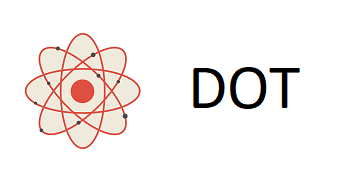What is a Quantum dot display?
The deciding factor for which screen is the best, price aside, comes down to which screen outputs the most appealing visuals (what looks the most realistic).
Quantum dots are basically nanoparticles that are added to the glass, filter, electronics and film layers (also called the sandwich) by manufacturers in LCD’s. When quantum dots are lighted, they emit light of a specific color and the development of this technology has been a major achievement as it opened doors (figuratively) which revealed numerous more colors and added the brightness needed to unlock the full potential of technologies like HDR. In addition when coupled with the fact QLED’s can be as large as 97 inches, they make quite a compelling case as to why they are one of the, if not the, best screens out there.
QLED’s can be thought of as essentially a type of an LCD with a new type of backlight. The backlight Is made up of miniature phosphorescent crystals that respond to electricity and light. These crystals are called nanoparticles (because they are about 500 nanometers in diameter), which are capable of glowing in a number of different colors. What color the glow actually is depends on the number of atoms present inside the said nanoparticle. Quantum dots effuse green/red light when struck with blue light, this quality is used in place of a pure white backlight, which results in you experiencing highly precise and saturated colors than a normal LCD displays, which is why QLED’s are becoming increasingly popular and are being used for products other than high-end T.V.’s, especially in products used by professionals, where accuracy, depth and contrast are of the essence.
When compared with OLED, QLED’s are cheaper and aren’t limited by any issues or limitations found in OLED displays.
Advantages
· Cheaper (when compared to OLED)
· Greater lifespan and lower burn in (phenomenon in which the light from a pixel dims over time)
· Energy efficient
· Greater peak brightness and more accurate colors
· Thinner and larger panels
Disadvantages
· QLED’s require a backlight as the crystals themselves don’t produce any light
· The blues are less saturated
· QLED displays suffer from light bleeding effect
· The best viewing angle for QLED displays is right in the center. The picture quality and contrast both diminish if the viewer is sitting off center
QLED monitors good for gaming?
QLED displays are ideal as far as gaming is concerned, as they provide an excellent immersive experience with the help of amazing picture quality, contrast and vibrant colors to produce almost lifelike pictures. In addition for HDR content, QLED provided higher brightness, blacker blacks and greater color gamut in comparison to other monitor types. Moreover with the help of features like black level stabilization and sync technologies, like Freesync and G-sync, QLED present the option to play graphics intensive games without missing any single detail on the screen.
However Quantum technology is mostly found in T.V.’s nowadays and the number of QLED monitors options are quite limited.

